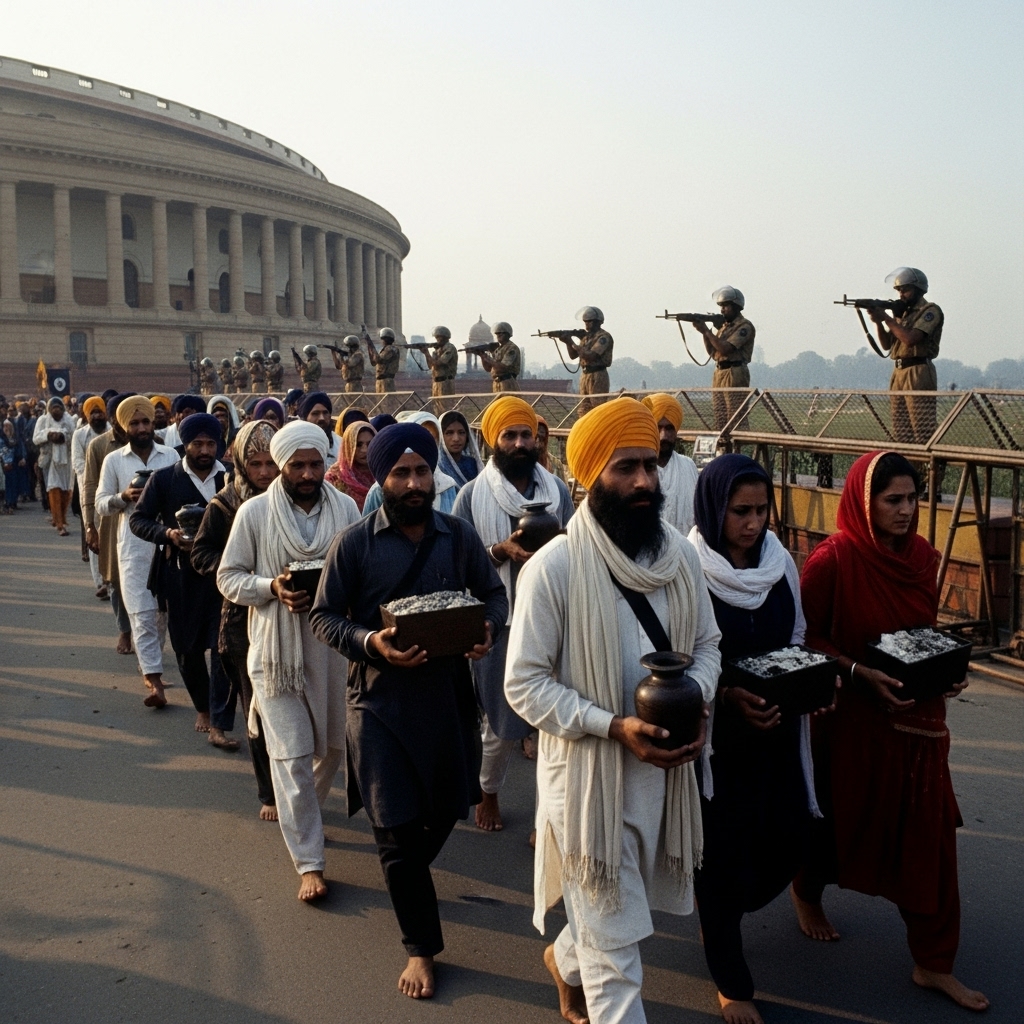🕊️ 1982 — Tragedy Near Parliament: The 1982 Procession
A Sikh procession carrying the ashes of those killed earlier was met with police firing near the Indian Parliament, resulting in more deaths.

Even in solemn moments of mourning, justice can be tragically elusive, and peace brutally shattered.
On this day in 1982, a Sikh procession, carrying the ashes of 34 Sikhs killed just weeks prior, marched near the Indian Parliament House in Delhi. Instead of solemn respect, they faced police firing. Four Sikhs, including a saint, Jang Singh, were killed. Disturbingly, police also fired inside Gurdwara Rakab Ganj, with eyewitness accounts and newspaper photographs showing officers aiming directly at the sacred site.
This tragic event stands as a painful reminder of the challenges and injustices faced by the Sikh community, particularly during periods of heightened tension. It underscores the vital importance of protecting peaceful dissent and religious sites, and the enduring quest for truth and accountability.
Remember those who suffered in the pursuit of justice, and commit to safeguarding civil liberties and human rights for all.
|

